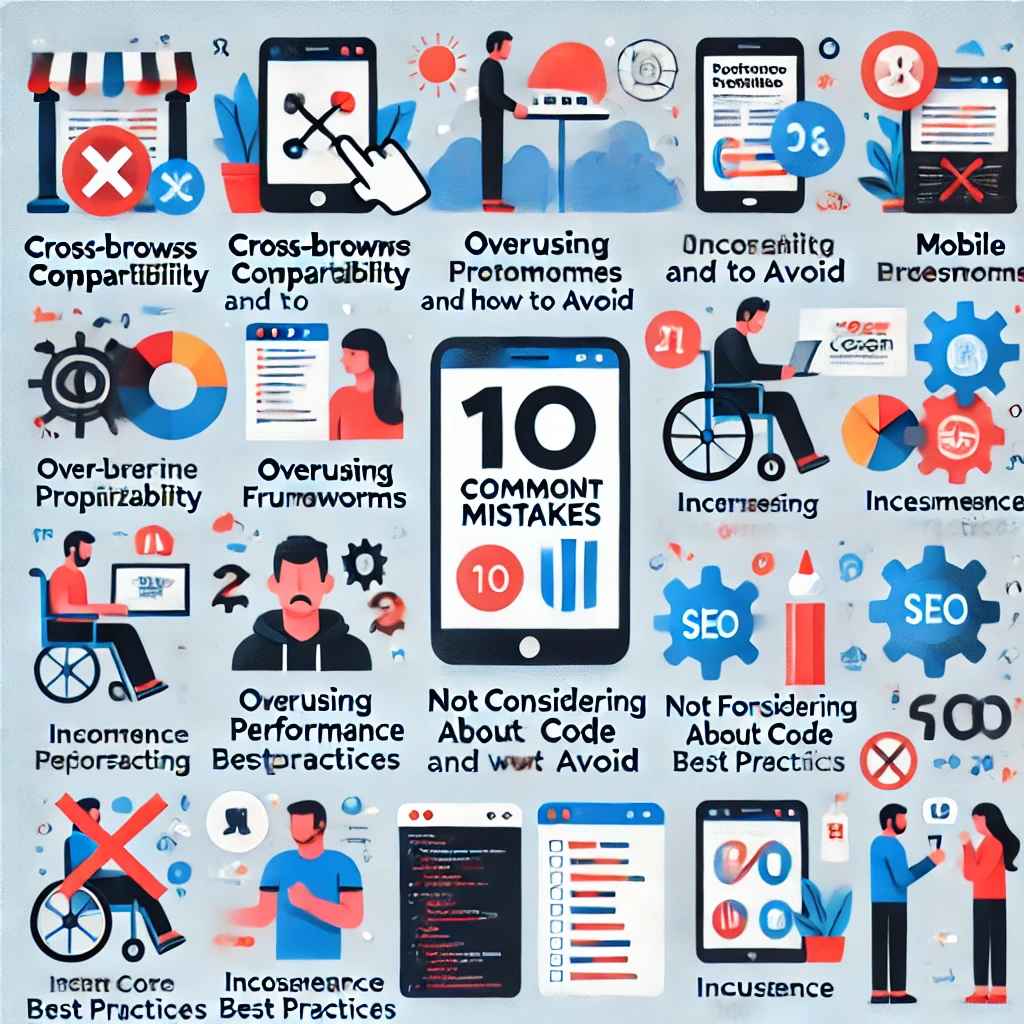
10 Common Frontend Mistakes and How to Avoid Them
1. Neglecting Cross-Browser Compatibility
Mistake:
Many developers assume their website will look and function the same across all browsers. This oversight can lead to significant discrepancies in user experience.
Solution:
Always test your site in multiple browsers (Chrome, Firefox, Safari, Edge) and on various devices. Utilize tools like BrowserStack or CrossBrowserTesting to identify and fix compatibility issues.
2. Ignoring Mobile Responsiveness
Mistake:
With a growing number of users accessing websites from mobile devices, a non-responsive design can deter visitors and lead to higher bounce rates.
Solution:
Use responsive design techniques, such as CSS media queries, flexible grid layouts, and scalable images. Frameworks like Bootstrap can also help streamline the process.
3. Overusing Frameworks and Libraries
Mistake:
While frameworks and libraries can speed up development, relying too heavily on them can lead to bloated code and unnecessary complexity.
Solution:
Understand the core principles of HTML, CSS, and JavaScript. Use frameworks judiciously and only when they genuinely add value to your project.
4. Poor Performance Optimization
Mistake:
Slow-loading websites frustrate users and can negatively impact SEO rankings. Common issues include unoptimized images, excessive scripts, and large file sizes.
Solution:
Optimize images using formats like WebP and compress files using tools like Gzip. Leverage lazy loading for images and scripts to improve load times.
5. Neglecting Accessibility
Mistake:
Failing to consider users with disabilities can exclude a significant portion of your audience. Accessibility often gets overlooked in the development process.
Solution:
Follow the Web Content Accessibility Guidelines (WCAG) to ensure your website is usable for everyone. Use semantic HTML, provide alt text for images, and ensure keyboard navigation is smooth.
6. Lack of User Testing
Mistake:
Skipping user testing can result in a design that doesn’t meet the needs of your audience, leading to frustration and abandonment.
Solution:
Conduct user testing sessions to gather feedback on usability and design. Utilize A/B testing to compare different versions of your site and determine what works best.
7. Inconsistent Design Elements
Mistake:
Inconsistencies in design, such as color schemes, font choices, and button styles, can confuse users and diminish brand identity.
Solution:
Create a design system or style guide that outlines the visual elements of your website. Ensure consistency in colors, fonts, and spacing throughout the site.
8. Ignoring SEO Best Practices
Mistake:
Many frontend developers overlook SEO, which can hinder a website's visibility in search engine results.
Solution:
Incorporate SEO best practices from the start, including optimizing meta tags, using descriptive URLs, and ensuring proper heading structure. Tools like Yoast SEO can help streamline the process.
9. Not Considering Performance Metrics
Mistake:
Failing to monitor performance metrics can lead to undetected issues affecting user experience and engagement.
Solution:
Use tools like Google Analytics and Google PageSpeed Insights to track performance metrics and identify areas for improvement. Regularly review these metrics to ensure optimal performance.
10. Forgetting About Code Readability
Mistake:
Writing code that is difficult to read or maintain can slow down future development and lead to increased bugs.
Solution:
Follow best coding practices, such as using meaningful variable names, consistent indentation, and modular code structure. Document your code thoroughly to help others (and yourself) understand it later.





